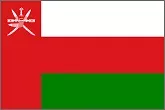OMN-LITERACY-RATE-BY-GENDER

Output
Compare
- Country
- Indicator
Graph
Table
?
Literacy statistics for most countries cover the population ages 15 and older, but some include younger ages or are confined to age ranges that tend to inflate literacy rates. The youth literacy rate for ages 15-24 reflects recent progress in education. It measures the accumulated outcomes of primary education over the previous 10 years or so by indicating the proportion of the population who have passed through the primary education system and acquired basic literacy and numeracy skills. Generally, literacy also encompasses numeracy, the ability to make simple arithmetic calculations. Data on literacy are compiled by the UNESCO Institute for Statistics based on national censuses and household surveys and, for countries without recent literacy data, using the Global Age-Specific Literacy Projection Model (GALP).
Basic data
Download code



